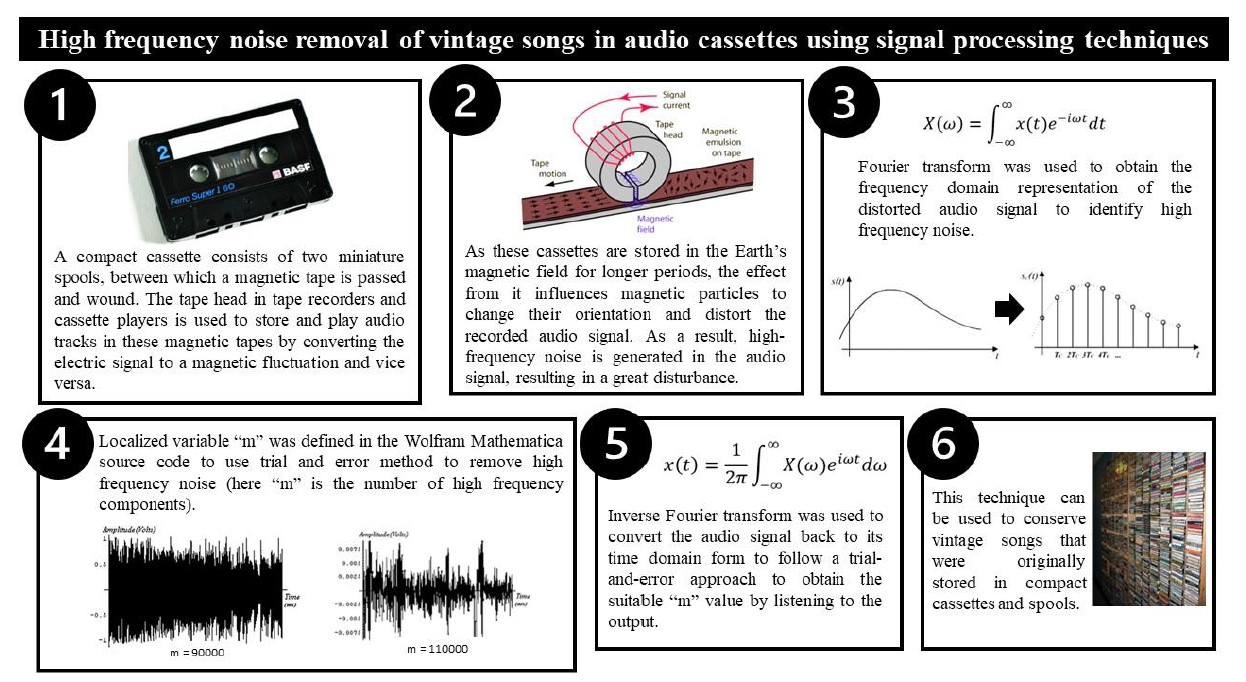High-frequency Noise Removal of Vintage Songs in Audio Cassettes using Signal Processing Techniques
DOI:
https://doi.org/10.31357/vjs.v26i01.6416Abstract

From 1960 to the early 2000s, the audio cassette was one of the three most used storage devices for prerecorded music, alongside gramophone records (LPs) and compact discs (CDs). A compact cassette consists of two miniature spools, between which a magnetic tape is passed and wound. The tape head in tape recorders and cassette players is used to store and play audio tracks in these magnetic tapes by converting the electric signal to a magnetic fluctuation and vice versa. The sound quality of an audio track recorded on a compact cassette is decent. However, as these cassettes are stored in the Earth’s magnetic field for longer periods, the effect from it influences magnetic particles to change their orientation and distort the recorded audio signal. As a result, high-frequency noise is generated in the audio signal, resulting in a great disturbance when listening to songs and other audio recordings on vintage cassettes.
168
Therefore, the removal of such noises while minimizing the impact on the original audio signal will make sure the listener gets to enjoy the original quality of the vintage audio recordings. Fourier transform of a given distorted audio file (in “wav” format) was obtained to identify the high-frequency noise using Wolfram Mathematica 12.3. Then a variable “m” was introduced to the program to identify magnitudes of high-frequency components and remove their effect on the original audio recording. A trial-and-error approach was taken to identify the adequate “m" value for each channel of a given audio signal. Vintage songs were used to evaluate the accuracy of the developed method in this study. It was identified that the suitable “m” value changes for each channel in each song. Therefore, it is impossible to state a constant value for the variable “m”. However, the accuracy of the output also depends on the hearing frequency of the person, and the audio equipment being used. As an application, this technique can be used to conserve vintage songs that were originally stored in compact cassettes and spools, because it allows the user to control the number of high-frequency components removed from the distorted audio signal.
Keywords: Signal Processing Techniques, Fourier Transforms, Mathematica, Noise Removing,
Audio Cassettes



